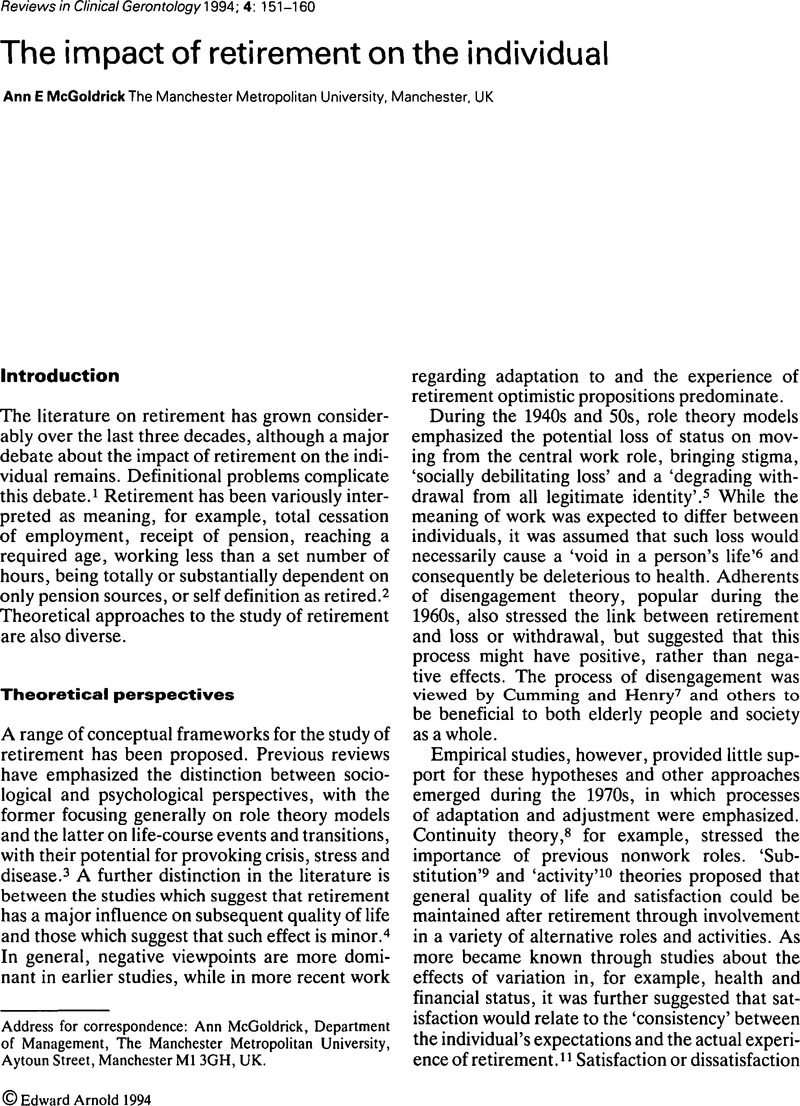Crossref Citations
This article has been cited by the following publications. This list is generated based on data provided by Crossref.
McGoldrick, Ann E.
and
Cooper, Cary L.
1994.
Health and Ageing as Factors in the Retirement Experience.
European Work and Organizational Psychologist,
Vol. 4,
Issue. 1,
p.
1.
Briner, Tina Kiefer Rob B.
1998.
Managing Retirement—Rethinking Links between Individual and Organization.
European Journal of Work and Organizational Psychology,
Vol. 7,
Issue. 3,
p.
373.
LaBauve, Bill J.
and
Robinson, Chester R.
1999.
Adjusting to Retirement: Considerations for Counselors.
Adultspan Journal,
Vol. 1,
Issue. 1,
p.
2.
Fouquereau, Evelyne
Fernandez, Anne
and
Mullet, Etienne
2001.
EVALUATION OF DETERMINANTS OF RETIREMENT SATISFACTION AMONG WORKERS AND RETIRED PEOPLE.
Social Behavior and Personality: an international journal,
Vol. 29,
Issue. 8,
p.
777.



